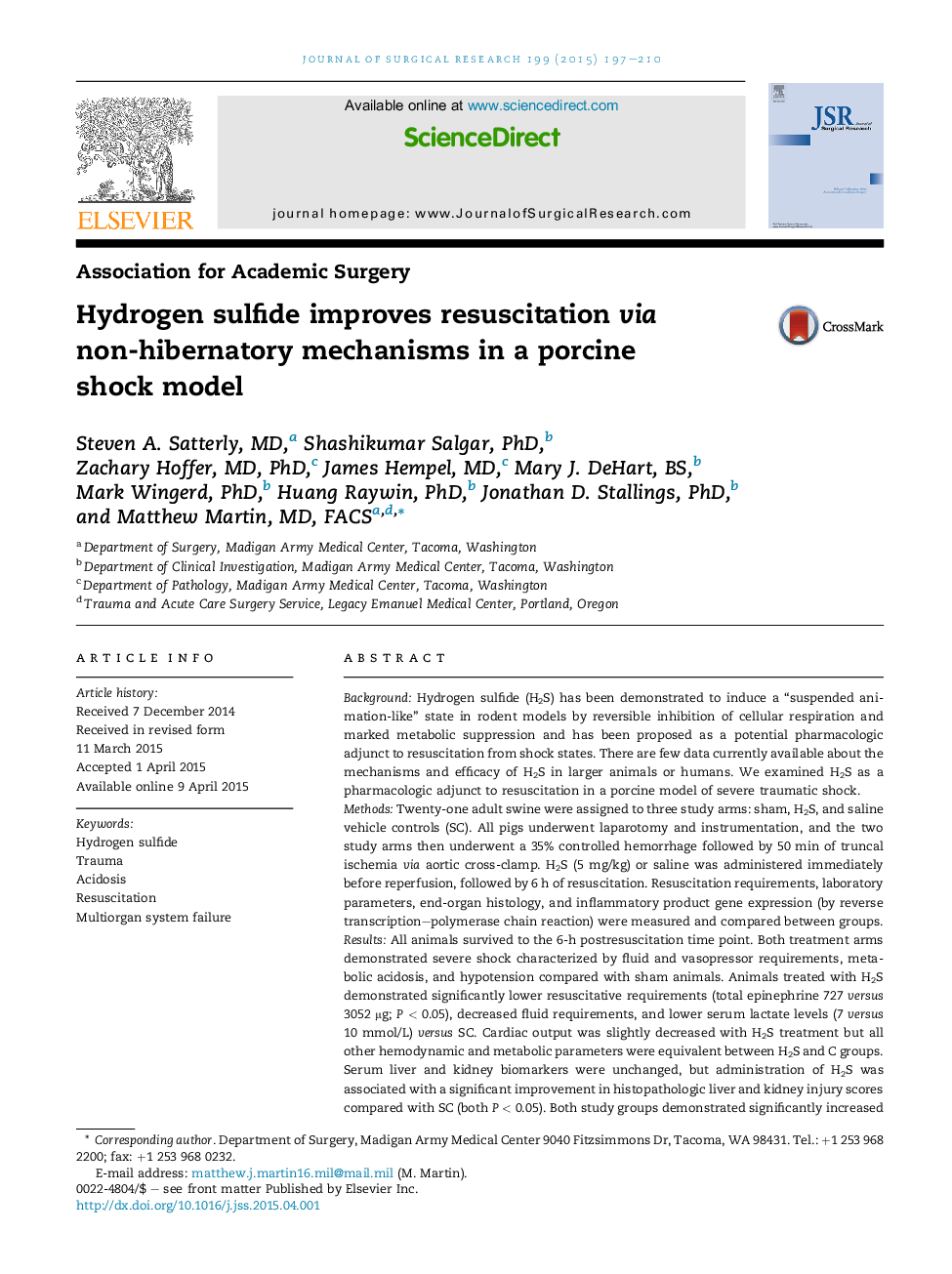| کد مقاله | کد نشریه | سال انتشار | مقاله انگلیسی | نسخه تمام متن |
|---|---|---|---|---|
| 4299615 | 1288396 | 2015 | 14 صفحه PDF | دانلود رایگان |
BackgroundHydrogen sulfide (H2S) has been demonstrated to induce a “suspended animation-like” state in rodent models by reversible inhibition of cellular respiration and marked metabolic suppression and has been proposed as a potential pharmacologic adjunct to resuscitation from shock states. There are few data currently available about the mechanisms and efficacy of H2S in larger animals or humans. We examined H2S as a pharmacologic adjunct to resuscitation in a porcine model of severe traumatic shock.MethodsTwenty-one adult swine were assigned to three study arms: sham, H2S, and saline vehicle controls (SC). All pigs underwent laparotomy and instrumentation, and the two study arms then underwent a 35% controlled hemorrhage followed by 50 min of truncal ischemia via aortic cross-clamp. H2S (5 mg/kg) or saline was administered immediately before reperfusion, followed by 6 h of resuscitation. Resuscitation requirements, laboratory parameters, end-organ histology, and inflammatory product gene expression (by reverse transcription–polymerase chain reaction) were measured and compared between groups.ResultsAll animals survived to the 6-h postresuscitation time point. Both treatment arms demonstrated severe shock characterized by fluid and vasopressor requirements, metabolic acidosis, and hypotension compared with sham animals. Animals treated with H2S demonstrated significantly lower resuscitative requirements (total epinephrine 727 versus 3052 μg; P < 0.05), decreased fluid requirements, and lower serum lactate levels (7 versus 10 mmol/L) versus SC. Cardiac output was slightly decreased with H2S treatment but all other hemodynamic and metabolic parameters were equivalent between H2S and C groups. Serum liver and kidney biomarkers were unchanged, but administration of H2S was associated with a significant improvement in histopathologic liver and kidney injury scores compared with SC (both P < 0.05). Both study groups demonstrated significantly increased gene expression of hypoxia-inducible factor 1α and nitric oxide synthase (endogenous nitric oxide synthase, inducible nitric oxide synthase [iNOS]2, iNOS3) relative to sham animals. However, H2S was associated with increased expression of hypoxia-inducible factor 1α and decreased iNOS2 levels compared with SC.ConclusionsAdministration of H2S in a large-animal model of severe traumatic shock resulted in a significant decrease in resuscitative requirements, decreased metabolic acidosis, and less end-organ histologic injury compared with standard resuscitation. H2S did not induce profound metabolic suppression as seen in rodents, and appears to have alternative mechanisms of action in large animals.
Journal: Journal of Surgical Research - Volume 199, Issue 1, November 2015, Pages 197–210
